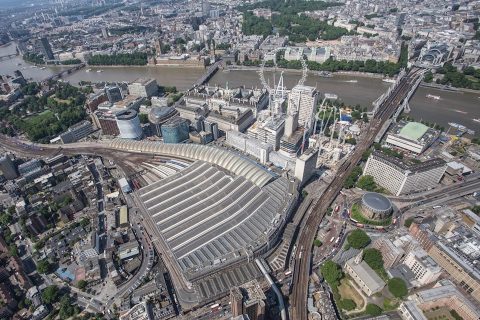Railways to save the environment
Building and rebuilding railways will save planet Earth from environmental calamity, and save the global economy. The technology that transformed the early nineteenth century can save the late twenty-first century too – providing we move away from fossil fuels of course.
Railways are seen as vital to making Europe a carbon-neutral economy by 2050. That’s the aim of the European Green Deal, the initiative adopted on 13 December, and introduced by Ursula von der Leyen, the new President of the European Commission. The raft of policy initiatives include proposals for a radical shift from road to rail for both goods and passenger transport, as a fundamental weapon in the war against greenhouse gas emissions. While addressing the fundamental issue of fuel alternatives – moving out of hydrocarbons – the Deal also calls for radical modal shift, including “a substantial part of the 75% of inland freight carried today by road should shift onto rail and inland waterways.”
Congestion a problem too
Freight modal shift itself will not be enough to solve every transport challenge facing a carbon-neutral Europe. Passenger road traffic, particularly private car travel, presents several environmental problems, primarily congestion and emissions. Despite individual units becoming much cleaner, academic studies show that the huge rise in travel over the past four decades has driven up emissions overall. Mass transit systems – buses in ordinary language – reduce vehicle congestion, but are blamed for diesel particulates, even though organisations like the UK’s Coach Tourism Council point out that upwards of seventy people in one vehicle makes far more environmental sense than underutilised and over-consuming private cars.
As an alternative to hydrocarbons, electrifying the private road fleet is gathering pace, and being backed by laws around the world. However private transport is only just beginning to catch up with public transport. Electric railways – from the New York Subway to Hanoi’s brand new metro – have been electric-powered for over a century. The Vietnamese capital, which is of the comparable population to New York City, and one of the world’s most congested cities, is however only just getting on the metro merry-go-round, emulating a number of Asian cities. Nanning, Hanoi’s Chinese neighbour, is being transformed by a multiple line metro. Operations began just three years ago, with almost a line a year opening. Three further lines are under construction, and though far from silent, Nanning’s streets are home to a teeming mass of electric scooters, in an environmentally-friendly – and quieter- analogue of Vietnam’s two-stroke traffic.
Wires back in fashion
Electric bikes aside, zero-emissions surface solutions have historically revolved around tramways. The lower-cost solution of trolleybuses went out of fashion in the 1950s – although Budapest never did get that particular memo and continues to develop its city network. Those unfashionable street-strung wires might just, however, make Hungary’s capital a centre for the most radical change in freight transport since the horse and cart was usurped by internal combustion.
Electric truck trials have been carried out in Germany … with a difference. Engineering company Siemens equipped a length of autobahn test track with overhead electric catenary wiring. Prototype road tractor units, fitted with electric motors and pantographs, have been running for evaluation for over a year. In Sweden, two kilometres of motorway have been electrified to allow hybrid trucks to charge while on the move.
It is in freight though that the most radical changes can be attributed to rail. Speaking in November at the European Silk Road Summit in Venlo, in The Netherlands, Simo Päivinen, development director of Kouvola Innovation, pointed out that an electromotive freight train moved goods with a 76% overall reduction in emissions, compared with road transport. The key points being that economic activity inevitably generates some environmental impact, but railways, particularly electric railways, not only reduce that impact but combat the distribution of emissions too.
Radical change to avoid climate change
With renewable generation, there’s scope for further reductions too. Writing for the academic journal The Conversation, Stephen Joseph from the University of Hertfordshire in England, and a former long-serving chief executive of the Campaign for Better Transport, says we also need a radical and rapid reduction in road traffic, and electrified railways could be an important part of the answer. “They are highly efficient users of both land and energy. A train moves with much less friction than faced by tyres on roads. Electric trains are particularly energy-efficient, as they don’t have to carry diesel fuel or diesel engines, so are lighter and require less maintenance.”
With the European Green Deal setting a ‘no net emissions’ target date of 2050, the de-carbonisation programme has been called ambitious by some contemporary commentators. Thirty years from now seems like no time at all to transform the twenty-first-century economy. Historians, on the other hand, will point out that from steam and horse-power in 1899, to predominantly hydrocarbon by 1914 took just half that time, and railway tech has considerably more weapons in its contemporary arsenal.




